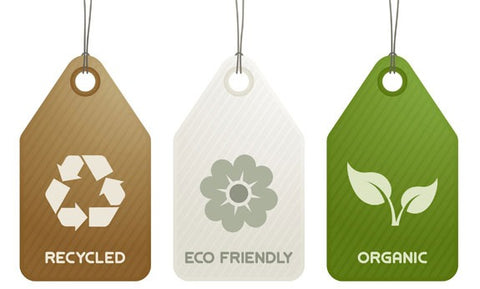
2019 was a fruitful year for organic cotton. Production levels reached an eight-year high, while growth levels went up to a record of 56%. With seven countries contributing to 98% of the overall production, an increase in organic certified land used for cultivation was also witnessed.
The year was particularly encouraging for India. Responsible for nearly half of global production, India has more than 1.5 lakh farmers cultivating on 226,316 hectares of certified organic land. The average yield for cotton farmers in India is 550 kg/ha. Odisha, Madhya Pradesh, Gujarat, Maharashtra, Rajasthan, Telangana, and Karnataka are the biggest producers of organic cotton in India.
Recommended Reading: Difference between Organic and Conventional Cotton
There’s no doubt that there’s an organic cotton revolution going on, and India is the undisputed frontrunner of it.
In the wake of the crises humanity as a species faces today, the United Nations created a list of 17 Sustainable Development Goals (SDGs) to be achieved by the year 2030. These goals are a blueprint of how we can create a more sustainable future for ourselves and future generations.
And if you are wondering how organic cotton helps achieve these 17 sustainable goals, here is a summary for you.
Goal 1: Eradication of Poverty

Organic cotton ensures that farmers earn more for their produce, and spend less on inputs. This reduces their dependence on loans, leaving them with more money for themselves.
Goal 2: Zero Hunger

Organic cotton is always grown alongside or in rotation with a variety of food crops, which ensures food security.
Goal 3: Good Health and Well-Being

Organic cotton farmers and their families do not face any exposure to toxic chemicals from pesticides, insecticides or other toxins used in traditional farming practices.
Goal 4: Quality Education

Higher financial returns mean that organic farming communities can invest in education, and welcome even more investment from supply chain partners.
Goal 5: Gender Equality

A large proportion of organic cotton farmers are women, particularly in Asia and Africa. 10% of organic farmers around the world are women, and have total control over their firms.
Goal 6: Clean Water and Sanitation

As organic cotton prohibits the use of toxic chemicals, there is practically zero threat of the contamination of local water bodies.
Bonus Tip: How Sustainable is your Product
Goal 7: Affordable and Clean Energy

Most organic cotton farming communities use affordable renewable sources of energy, such as solar and biogas. This is done particularly in areas where there is limited access to electricity.
Goal 8: Decent Work and Economic Growth

Organic cotton farming employs over 200,000 people from all over the world, mostly smallholder farmers. The numbers are much larger when we consider organic and agro-ecological sectors.
Goal 9: Industry Innovation and Infrastructure

Organic cotton production is sustainable, ethical, transparent, and certified while meeting the highest standards possible.
Goal 10: Reduced Inequalities

By employing as many women as men, organic production is considered pro-female. The fact that there are no toxic chemicals used minimizes the risk to pregnant women or mothers.
Goal 11: Sustainable Cities and Communities

Greater financial returns, the absence of toxic chemicals, and worker satisfaction ensure more people will be happy with their cities and helps bring the community together.
Also Read: Why should you Recycle?
Goal 12: Responsible Consumption and Production

Organic ‘life choices’, at the farm, factory, retail and at home, promote healthy choices for all involved, from workers to buyers.
Goal 13: Climate Action

Organic cotton does not depend on synthetic fertilizers, which often draw on fossil fuels. Carbon is a key component of soil building, which improves soil fertility.
Goal 14: Life Below Water

By eliminating toxic pesticides, organic cotton production contributes to a cleaner and healthier waterbodies, sustaining life underwater in both local water bodies and global ones.
Goal 15: Life On Land

Organic cotton farming improves soil fertility, increases biodiversity, and minimizes tillage.
Goal 16: Peace, Justice and Strong Institutions

Many organic farming operations are cooperatives, which require democratic collaboration and honest work to create shared values.
Goal 17: Partnerships for the Goals

A vital element to organic cotton production is its commitment to global partnerships and cooperations – and acknowledging the interdependencies.
Bonus Tip: Why Sustainable Fashion Matters?
Organic Cotton in Other Countries

Standards and Certifications

There are certain certification bodies that exist to ensure the authenticity of your organic cotton. The most popular one is GOTS certification, which ensures your cotton is made with at least 95% organic fibers. It also ensures that no GMOs, toxic chemicals and toxins are used during the entire process. You can learn more about GOTS Certification here.
Also Read: Everything you need to know about GOTS Certification
At NorthMist, we switched to organic cotton because we believe that not only does it have a positive impact on our environment, but it is also great for the society and economy as a whole.
Interested in learning more about organic cotton? Visit our blog to find out more!






